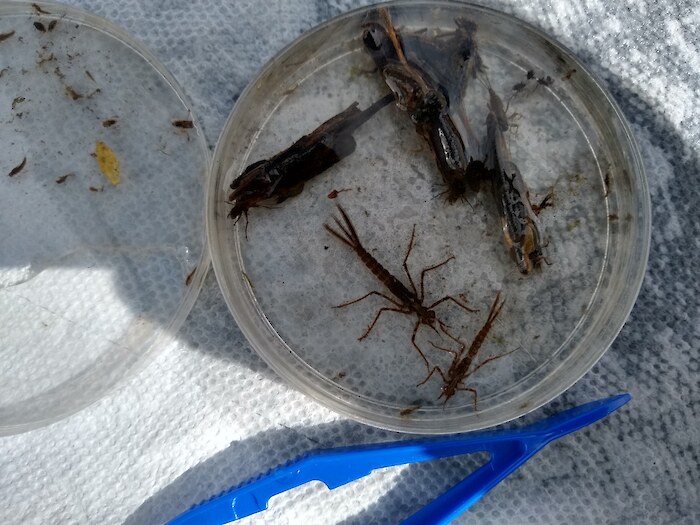
Benthic Community assesses the community of small aquatic animals that live on the bottom of streams and rivers. Because some species are more sensitive to poor environmental conditions than others, the presence and relative abundance of different benthic macroinvertebrates provides an overall picture of a river’s ecological condition.
How is it scored?
We scored sampling sites within a watershed according to the method used by the watershed group and then converted those scores to a standard scale (0–100) using threshold-specific equations (Table 1 and Table 2). Site-level scores were averaged annually at the watershed scale and the overall average across years was used to calculate the watershed score. Area-weighted watershed scores were summed to calculate an overall region score.
Table 1. Equations used to convert the original macroinvertebrate score to the report card scale for the Detroit, Huron, and River Raisin watersheds. Original scores were calculated using the MiCorp Volunteer Stream Monitoring Program.
MiCorp Score | MiCorp Descriptor | Report Card Score | Equation |
0–3.50 | Excellent | 80–100 | y = -4.444x + 100 |
3.51–4.50 | Very Good | ||
4.51–5.50 | Good | 60–79 | y = -9.5477x + 102.06 |
5.51–6.50 | Fair | 30–59 | y = -4.0404x + 65.303 |
6.51–7.50 | Fairly Poor | ||
7.51–8.50 | Poor | 20–29 | y = -14.141x + 140.2 |
8.51–10.00 | Very Poor | 0–19 | y = -12.752x + 127.52 |
Table 2. Original scoring scale and narrative description and corresponding report card score range for the Clinton and Rouge watersheds. Original scores were calculated using the Stream Quality Index method and converted to the report card scale using the rescale function in Program R (R Core Development Team).
Original Score | Descriptor | Report Card Score |
>48 | Excellent | 80–100 |
34–48 | Good | 60–79 |
19–33 | Fair | 40–59 |
<19 | Poor | 0–39 |
Data source: Watershed groups provided benthic macroinvertebrate data from their sampling programs for the most recent five years of data they had available, which ranged from 2016–2022.
